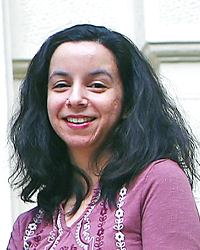In the first three years of the Millennium Nucleus (2017-2020), the objective of this line of investigation was to develop the experimental capacity to confine and study the dynamics of bacterial suspensions in microfluidic devices.
To accomplish this, we used Escherichia coli (E.coli) as the first experimental and theoretical model. The reasons were: it is a very well-studied bacteria, its dense hives show collective motion, and the fact that being able to confine and manipulate it is relevant to create links with the biotechnology industry and open new lines of investigation applied to lab-on-a-chip technologies. In this new stage of the Millennial Nucleus (2021-2023), we plan to extend this study to other bacteria used in agriculture and mining applications, mainly soil and magnetotactic bacteria.


 Researcher responsible:
Researcher responsible: